Editing a Local Speech Profile
Overview
The details of a Local Speech Profile are editable.
Step-by-step
1. Click  (in the Control Panel) and, in the resulting row below, select
(in the Control Panel) and, in the resulting row below, select  to open the "Speech Profiles Management" page.
to open the "Speech Profiles Management" page.
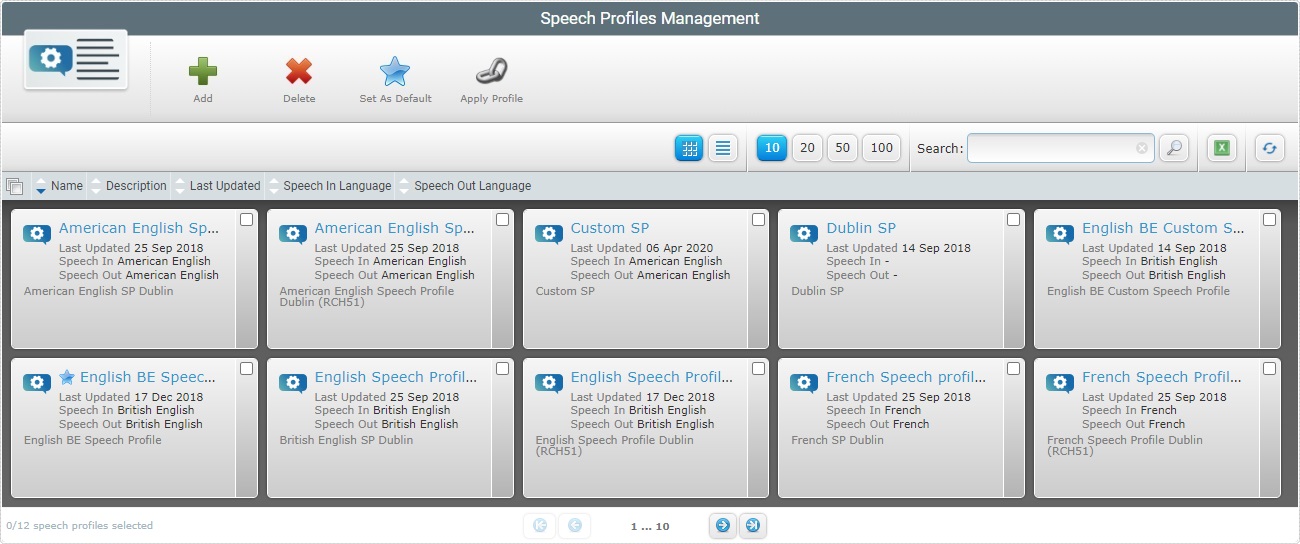
2. Select the local speech profile you want to edit by clicking its name (which is displayed in light blue). This opens the corresponding "Speech Profile Details" page.

3. Click ![]() to set the page to edit mode.
to set the page to edit mode.
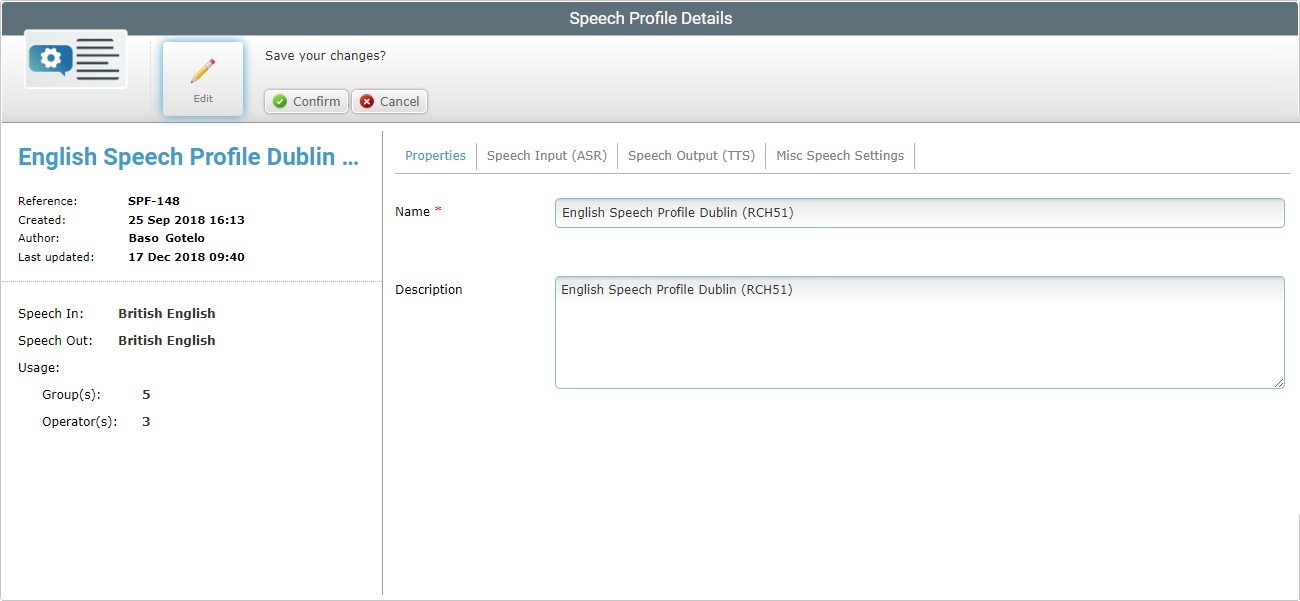
4. Edit the fields according to your requirements:
Name * |
Maintain or edit the the speech profile's name.
The underscore and/or dash characters are allowed. Start the speech profile's name with an alphabetic character. |
Description |
Maintain or edit the notes regarding the speech profile. The information is displayed in the "Description" column/space of the "Speech Profiles Management" page. |
5. If required, go to the "Speech Input (ASR)" tab. If you are done with the editing, proceed to step 11.
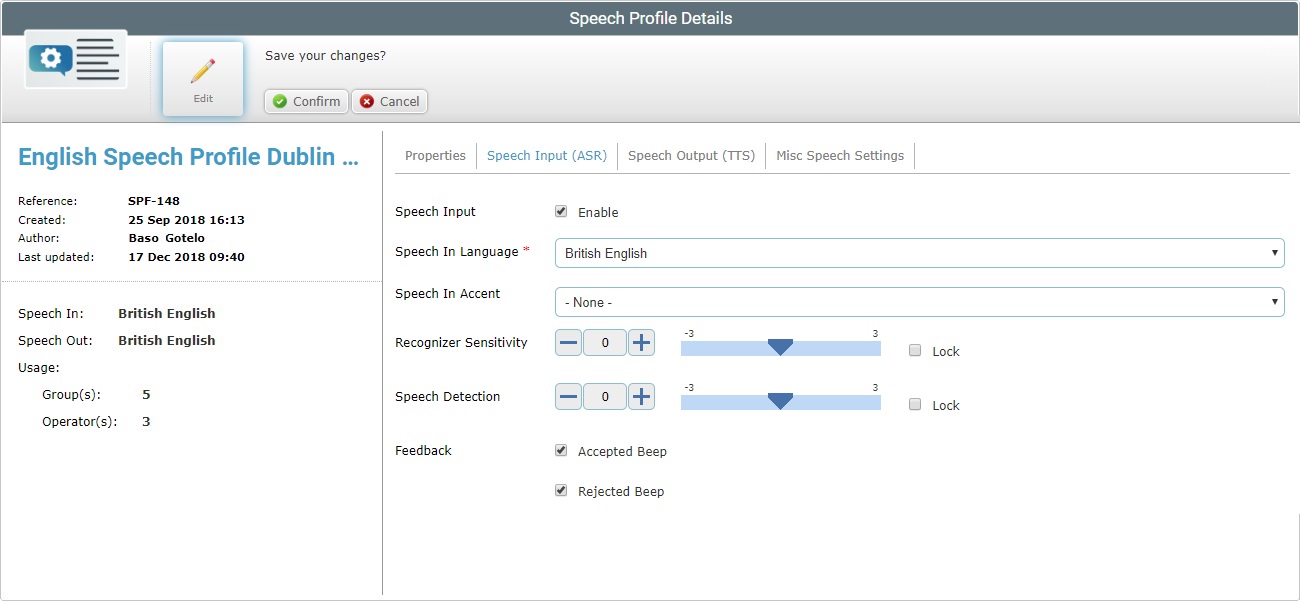
6. Edit the fields according to your requirements:
Speech Input |
Check/uncheck to enable/disable the Speech Input setting. If you disable speech input, all the other tab options will be deactivated/hidden. |
||||||||||||||||||
Speech In Language * |
Only available if the "Speech Input" option is checked. Maintain or select another language for the operator to use when interacting with the speech application. |
||||||||||||||||||
Speech In Accent |
Only available if the "Speech Input" option is checked. Maintain or select another accent file to store the fine tuning of speech recognition. The drop-down list displays the accent files added in the "Site Details" page. See Editing Site Details - Speech Tab. |
||||||||||||||||||
Recognizer Sensitivity |
Only available if the "Speech Input" option is checked. This parameter's purpose is to match the operator's speech to the expected words. Maintain or define another Recognizer Sensitivity value. Enter a new value, use the plus/minus buttons or drag the slider mark (available values from -3 to +3). Consider the following when defining the Recognizer Sensitivity value: •The operator's speech level (a good speech -high energy/loud and clear word pronunciation OR a poor speech -low energy and bad word pronunciation). •The operator's environment and possible interference from background noise. Ex: Too low recognizer sensitivity dismisses background noise but does NOT accept an operator's "poor" speech.
Possible settings based on general considerations:
Fine tuning suggestions:
|
||||||||||||||||||
Speech Detection |
Only available if the "Speech Input" option is checked. This parameter (aka microphone sensitivity) defines the "Speech Detection" levels that will "isolate" background noise from actual speech based on the received energy level. Maintain or define another speech detection value. Enter a new value, use the plus/minus buttons or drag the slider mark (available values from -3 to +3). Consider the following: •A high speech sensitivity helps detect a low energy speech (operator with a soft voice) but it increases the risk of noise processing. •A low speech sensitivity reduces the risk of noise processing but requires a high energy speech (operator must speak loud and clear) for a good detection.
Ex: For operators with a loud and clear voice, define a speech sensitivity value of -1 or -2.
Note that some words start with low energy (ex: words with an initial "sh" sound) which means they might not be detected if the speech sensitivity value is too low. |
||||||||||||||||||
Lock |
Only available if the "Speech Input" option is checked. Check the option(s) you want to hide in the "Operator Profile Details" page. This means it will not be possible to edit the checked (therefore, hidden) option(s) in an operator's profile. This only includes the operators associated to the operator groups that use this speech profile. The unchecked option(s) will be available in the" Operator Profile Details" page. |
||||||||||||||||||
Feedback |
Only available if the "Speech Input" option is checked. Accepted Beep - Check/uncheck this option to enable/disable a success/confirmation beep. Rejected Beep - Check/uncheck this option to enable/disable an unsuccessful/rejection beep. |
7. If required, go to the "Speech Output (TTS)" tab. If you are finished with the editing, proceed to step 11.
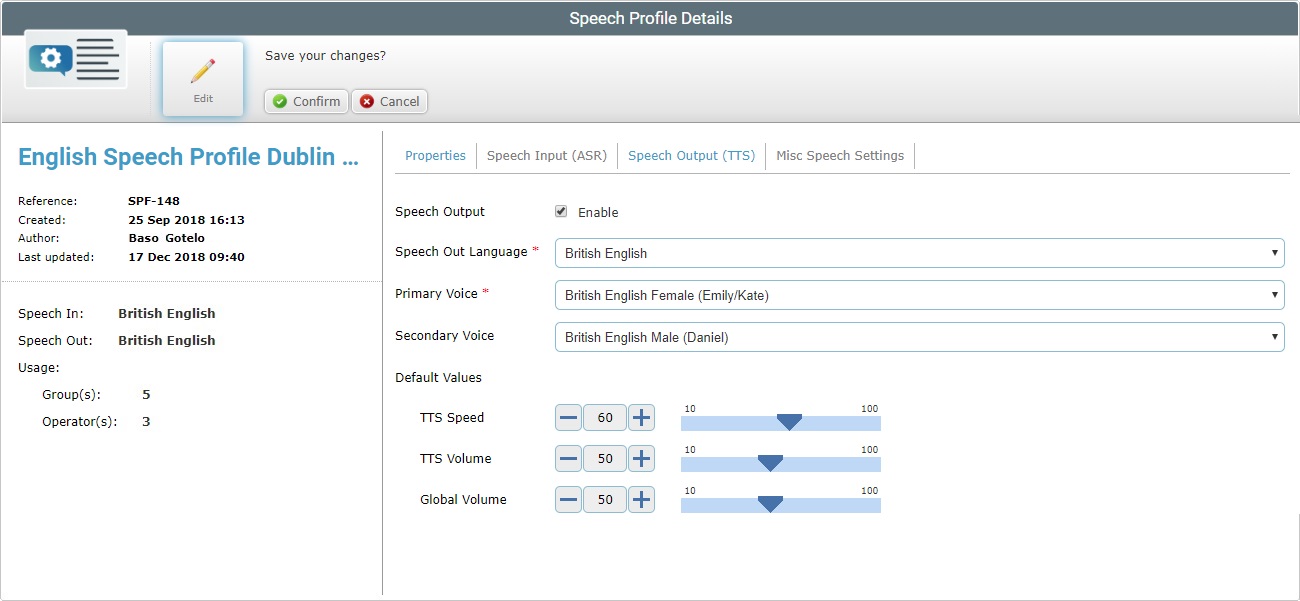
8. Edit the fields according to your requirements:
Speech Output |
Maintain or edit the "Speech Output" option. Check/uncheck to enable/disable Speech Output. If you disable this setting, all the other tab options will be deactivated/hidden. |
Speech Out Language * |
Maintain or select another language for the operator to hear from the device. |
Primary Voice * |
Maintain or select another primary language for the device. |
Secondary Voice |
Maintain or select another secondary language for the device. It will only be available if you have previously defined more than one compatible TTS language for the "Speech Out Language". |
Default Values |
|
TTS Speed |
Maintain the value or define a new speed to be used by the TTS (text to Speech) engine. Enter a new value, use the plus/minus buttons or drag the slider mark to define the new value. |
TTS Volume |
Maintain the value or define a new speech volume to be used by the TTS (text to Speech) engine. Enter a new value, use the plus/minus buttons or drag the slider mark to define it. (The TTS Volume parameter affects the synthesizer channel only.) |
Gobal Volume |
Maintain the value or use the slider to define a different global audio volume for the device. Enter a new value, use the plus/minus buttons or drag the slider mark to define it. (The Global Volume parameter sets the volume of all channels (recognition/rejection beep, application beep, TTS, wave player…).) |
9. If required, go to the "Misc Speech Settings" tab. If you are finished with the editing, proceed to step 11.
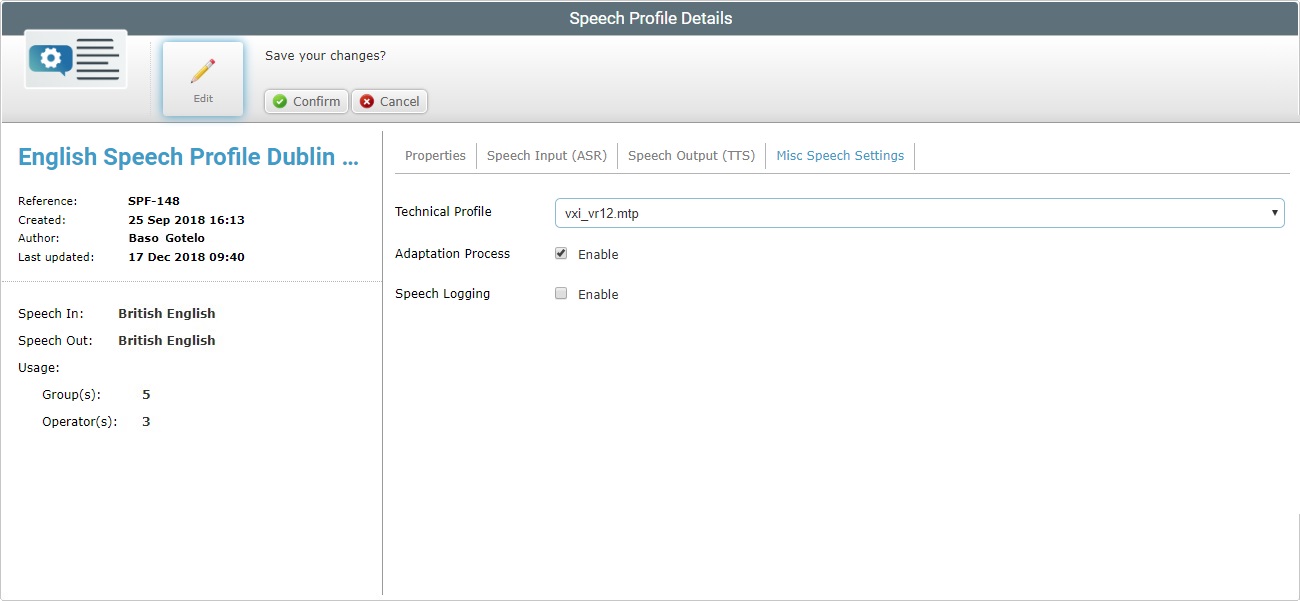
10. Edit the fields according to your requirements:
Technical Profile |
A Technical Profile is a configuration file, provided by MCL, that allows for the fine tuning of the MCL Mobility Platform Client behavior. Maintain or select another Technical Profile. The drop-down list displays the technical profiles added in the "Site Details" page. See Editing Site Details - Speech Tab. |
Adaptation Process |
This option does NOT apply to operators running MCL-Voice V4 applications. For operators handling MCL-Voice V3 applications, consider the following: Check/uncheck this option to enable/disable the use of adaptation. See Adaptation.
|
Speech Logging |
This option defines the default setting for generating voice logs that will be adopted by the speech operators using the current speech profile. Check/uncheck this option as required.
If checked, the operators adopting the current speech profile have the possibility to generate detailed voice logs with additional speech input data.
Checking this option does NOT automatically enable voice logs with additional speech input data. You MUST set that up in each operator's details page. See Operator Details – “Misc Speech Settings” tab
If unchecked, operators that use the current speech profile and log in via our MCL login app can still generate voice logs:
•If you set up the creation of voice logs with additional speech input data in the intended operator's details page ("Misc Speech Settings" tab).
•If the operator logs in via MCL Voice Operator Login App v.4.10.52 or higher, the MCL login app is set, by default, to generate basic voice logs and send them to the MCL-Mobility Platform account.
|
11. Click ![]() to conclude the operation.
to conclude the operation.